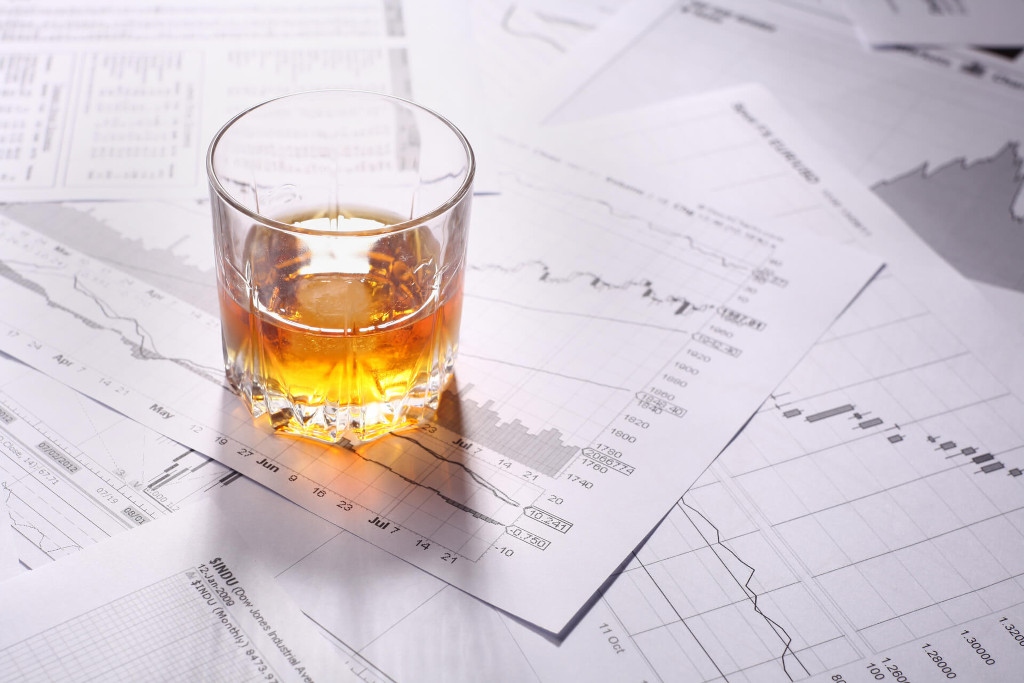You need to be aware of an impending shift in the world of premium spirits. Bourbon, long celebrated for its complex tastes and historic significance, is now also gaining attention as a promising new way to make money. The bigger narrative, in which bourbon holds a distinguished place, was alluded to when The Times recently highlighted the transformation of bourbon from a beloved drink to a major alternative asset.
The Interplay of Supply and Demand
When demand exceeds supply, as any fan of economics knows, prices tend to rise. This is also the condition that bourbon has been in since the late 1990s. The demand for rare and aged bourbon bottles and casks has increased dramatically. Due to the lengthy aging procedure required to produce the smooth, flavorful bourbon that is so popular, supplies are limited. According to data from the Bordeaux Index, the cost of bourbon has been steadily rising at a compound annual rate of 20%.
The outstanding performance of bourbon is nothing short of extraordinary, even in challenging economic stages,” said Alistair Moncrieff of Whisky Partners. It’s easy to see why savvy investors and collectors are doing well: the market value has increased by a staggering 400%. There was a 33.6% increase in new consumers in just one year. Many people now realize that bourbon barrels are extremely resilient, particularly through economic downturns.
Market Results That Turn Heads
Your grandfather might be so shocked by the current market price of the bourbons he used to keep on his shelf that he spills his drink. There has been a 21% increase in the value of rare bourbon since the beginning of the year, according to market data. There are no signs that this momentum will slow down.
Rare Whisky has been singled out by the KFL investment index as the decade’s top-performing asset class, with a staggering 428% increase in value from 2011 to 2021. Remember last summer’s mind-boggling £16 million sale of a single Ardbeg bourbon cask if you need a concrete illustration.
The dynamics of aging within the cask are an often-overlooked factor. Inside, the bourbon will continue to age and develop a deeper flavor. The fact that the cask’s alcohol evaporates naturally makes it exempt from CGT is an additional bonus for investors. This a positive development for individuals seeking maximum profit.
A Bourbon Investment That Benefits the People
For a long time, only a select few people had access to the complex world of cask procurement. However, the tides are turning. It’s becoming easier to navigate the maze of regulations and procedures surrounding cask sourcing, procurement, and management.
The latest Times piece, Alistair continues, “underscores what we’ve known for a while. Despite severe economic pressures, bourbon has always performed admirably as an investment.
Reviving an American Icon
Even though Scotch gets all the attention, we shouldn’t overlook bourbon’s rich American history. As the demand for bourbon increases around the world, places like Kentucky, which has access to high-quality limestone water, are recognised as sources of premium bourbon. From the Whisky Rebellion to its post-Prohibition boom, this spirit has been a central part of American history, and it continues to be more than simply the country’s signature drink; it also represents sophisticated taste and a potentially lucrative investment.
Spotlighting Rare Bourbons as Premier Investments

The bourbon market, as detailed earlier, has showcased itself as a promising realm of investment. And within this realm, some names stand taller, their bottles sought after as if they were treasures from legends of old. Here’s an exploration of five such bourbons, establishing their credentials not just on taste, but as solid financial ventures.
Pappy Van Winkle’s Family Reserve
- Profile: Perhaps one of the most illustrious names in the bourbon industry, Pappy Van Winkle’s Family Reserve is synonymous with rarity.
- Investment Insight: Limited annual releases make this bourbon a hot ticket item. Some expressions, especially the older 20-year and 23-year bottles, have been seen to fetch prices in the thousands at auctions. The scarcity combined with the brand reputation makes it a robust investment.
- Tasting Notes: Deep caramel with hints of dried fruit and vanilla. It’s the epitome of a well-aged, finely crafted bourbon.
Eagle Rare 17-Year-Old
- Profile: Part of the Buffalo Trace Antique Collection, this bourbon is known for its rarity and exceptional quality.
- Investment Insight: With only limited releases each year, bottles quickly find their way into the hands of collectors. Prices have consistently grown over the years, reflecting its investment potential.
- Tasting Notes: Rich with flavors of roasted coffee, oak, and chocolate, with a finish that lingers pleasantly.
Michter’s 20-Year-Old
- Profile: Michter’s is a brand with historical roots, and their 20-year-old bourbon is a shining star in their lineup.
- Investment Insight: Limited release schedules and high demand mean that the secondary market prices often multiply within months.
- Tasting Notes: A complex symphony of dried fruit, toasted nuts, and sweet spices, hinting at its long maturation.
William Larue Weller
- Profile: Another gem from the Buffalo Trace Antique Collection, is a wheated bourbon, giving it a unique flavor profile.
- Investment Insight: As with others in the collection, its annual release sees bourbon enthusiasts scrambling. Its value on the secondary market has been on an upward trajectory, marking its place as an investment-grade bourbon.
- Tasting Notes: Luscious hints of dried cherry, vanilla, and caramel, culminating in a rich mouthfeel.
Old Forester Birthday Bourbon
- Profile: Released annually to commemorate the founder George Garvin Brown’s birthday, this bourbon has a unique flavor profile each year.
- Investment Insight: Its annual variations and limited-release nature have seen it become a collector’s favorite. As older releases become harder to find, their market value witnesses a notable surge.
- Tasting Notes: Depending on the year, one might find notes ranging from dark chocolate, and rich oak, to tropical fruit.
Now is the moment to keep a close eye on the booming bourbon business, if you’re a seasoned investor or a bourbon fanatic. Bourbon’s rising financial profile warrants attention regardless of whether the spirit has hints of caramel, oak, or vanilla.

